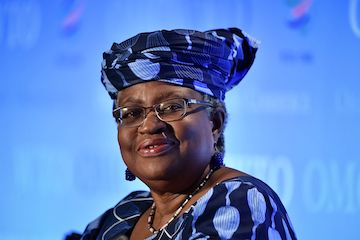The World Trade Organization raised its projection for growth in global merchandise trade this year to 8%—the biggest increase since 2010—while warning Covid-19 continues to pose the greatest threat to the outlook as new waves of infection could undermine any hoped-for recovery.
The rebound marks a significant bounce from 2020, when the pandemic saw global trade contract by 5.3%, less than the 9.2% decline estimated in October, the WTO said in a report released Wednesday in Geneva. Global trade may climb 4% in 2022, it said.

“A rapid vaccine roll-out is the best stimulus for the recovery,” she said. “Only by ramping up vaccines can we get the world economy back to full speed.”
Gross domestic product fell 3.8% in 2020—less than forecast—and may expand 5.1% this year and 3.8% in 2022, the WTO said.
“Keeping international markets open will be essential for economies to recover from this crisis and a rapid, global and equitable vaccine roll-out is a prerequisite for the strong and sustained recovery we all need,” Okonjo-Iweala said in the report.
A surge in demand for merchandise during the final half of 2020 helped counterbalance Covid-19’s initial disruption to global trade and produced more muted annual decline than the great recession, when global merchandise trade fell 12% and GDP contracted by 2%.
To date, more than 2.8 million people worldwide have died from Covid-19 and the number of global infections will soon exceed 130 million. The rapid development of multiple vaccines and their ongoing roll-out among major trading nations will could add about 1 percentage point to world GDP and about 2.5 percentage points to world merchandise trade growth in 2021, the WTO report said.
Nevertheless, the spread of more contagious and deadly variants of the virus pose an ongoing threat as Brazil, France and other nations grapple with an rising caseloads and overwhelmed hospitals.









